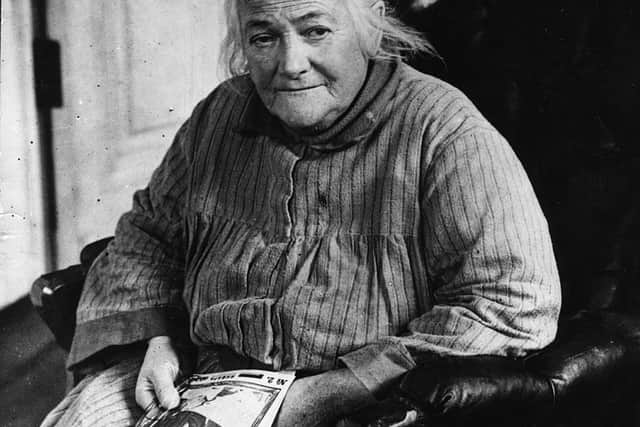International Women’s Day: Who was founder Clara Zetkin, as 2024 celebrations get underway
and live on Freeview channel 276
Today, Friday, March 8, marks International Women’s Day (IWD) - a day on which the social, economic, cultural and political achievements of women are celebrated around the world.
This year, the campaign theme for IWD is #EmbraceEquity, with IWD stating that “equity isn’t just a nice-to-have, it’s a must-have” and that “a focus on gender equity needs to be part of every society’s DNA”. The Dictionary defines equity as “the quality of being fair or impartial”.
Advertisement
Hide AdAdvertisement
Hide AdWhile you might be aware of IWD and intend to take part in celebrating, you might not be as familiar with the name Clara Zetkin. She was the leader of the Women’s Office for the Social Democratic Party in Germany and played an integral part in founding IWD.
This is what you need to know.
Who was Clara Zetkin?
Zetkin was a German activist who was involved in a number of political parties throughout her life, including the Social Democratic Party of Germany, the Independent Social Democratic Party of Germany and its far-left wing the Spartacist League, which later became the Communist Party of Germany.
She was born Clara Josephine Eissner on 5 July 1857 in Wiederau, a village in Saxony, which is now part of the municipality Königshain-Wiederau. After her family moved to Leipzig in 1872, she was educated at Leipzig Teachers’ College for Women. Because of the ban on socialist activity implemented in Germany in 1878, she left for Zurich in 1882 before going into exile in Paris, where she trained to be a journalist and a translator.
She took on the name Zetkin from her partner Ossip Zetkin, with whom she had two children, Maxim and Konstantin. Her partner fell ill in early 1889 and passed later that year. Following his death, Zetkin moved with her children to Stuttgart and later was married artist Georg Freidrich Zundel from 1899 to 1928.


Advertisement
Hide AdAdvertisement
Hide AdIn 1910, during the second International Conference of Working Women which was held in Copenhagen, Zetkin brought forth the idea of an International Women’s Day. She proposed that every year, in every country, there should be a celebration held on the same day in which women could press for their demands.
The conference, consisting of over 100 women from 17 different countries representing unions, socialist parties and working women’s clubs, responded to Zetkin’s idea with unanimous approval and so International Women’s Day was born.
IWD originally had no specific date, but it was generally celebrated around the end of February or beginning of March. Following a number of discussions, it was decided that IWD would be held annually on 8 March.
Zetkin died in 1933 at the age of 75, with her funeral attended by high profile communists from all over Europe, including the likes of Joseph Stalin and Nadezhda Krupskaya, the widow of Vladimir Lenin.
In her obituary, the Manchester Guardian referred to Zetkin as “the grandmother of communism”.
Comment Guidelines
National World encourages reader discussion on our stories. User feedback, insights and back-and-forth exchanges add a rich layer of context to reporting. Please review our Community Guidelines before commenting.
